On View
How a One-Painting Show Lets You Get Inside the Brilliant Young Basquiat’s Head
The Brooklyn Museum's show of the record-setting artwork, bought last year by a Japanese billionaire, has value far above the monetary.
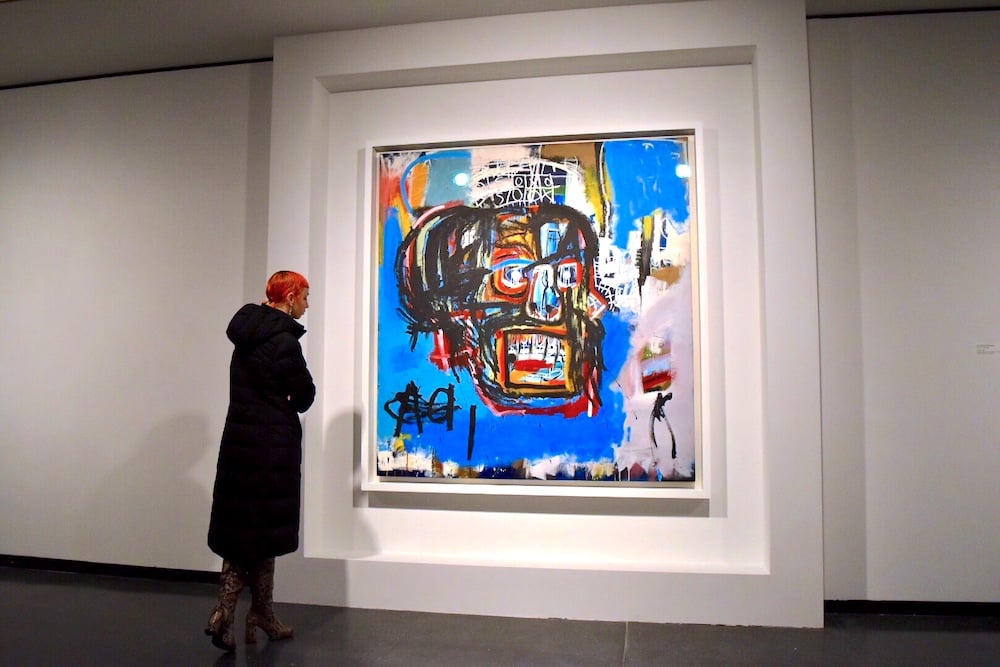
The Brooklyn Museum's show of the record-setting artwork, bought last year by a Japanese billionaire, has value far above the monetary.

Ben Davis

Money and art celebrity are what make Jean-Michel Basquiat’s Untitled (1982) worthy of a one-painting solo show at the Brooklyn Museum. The artwork was sold for $110.5 million to a Japanese billionaire last year, who has now lent it for the mini-exhibition as part of a world tour of his trophy. And of course, Basquiat’s shadow looms large within pop culture in general now.
Leaving all that aside, though, it is still an engrossing painting to dive into. Untitled hails from the young Basquiat’s mercurial early years, even before his first gallery show at Annina Nosei, when he was still a Caribbean-American kid from Brooklyn energetically bootstrapping himself into the limelight of the downtown art scene.
A year before, he had played a painter in the film Downtown 81 (excerpts of the film are showing at the Brooklyn Museum in an adjacent gallery), giving him the first chance to paint on actual canvas—a material upgrade from the walls of SoHo, which he notoriously stamped with his tag “SAMO” during his street art days.
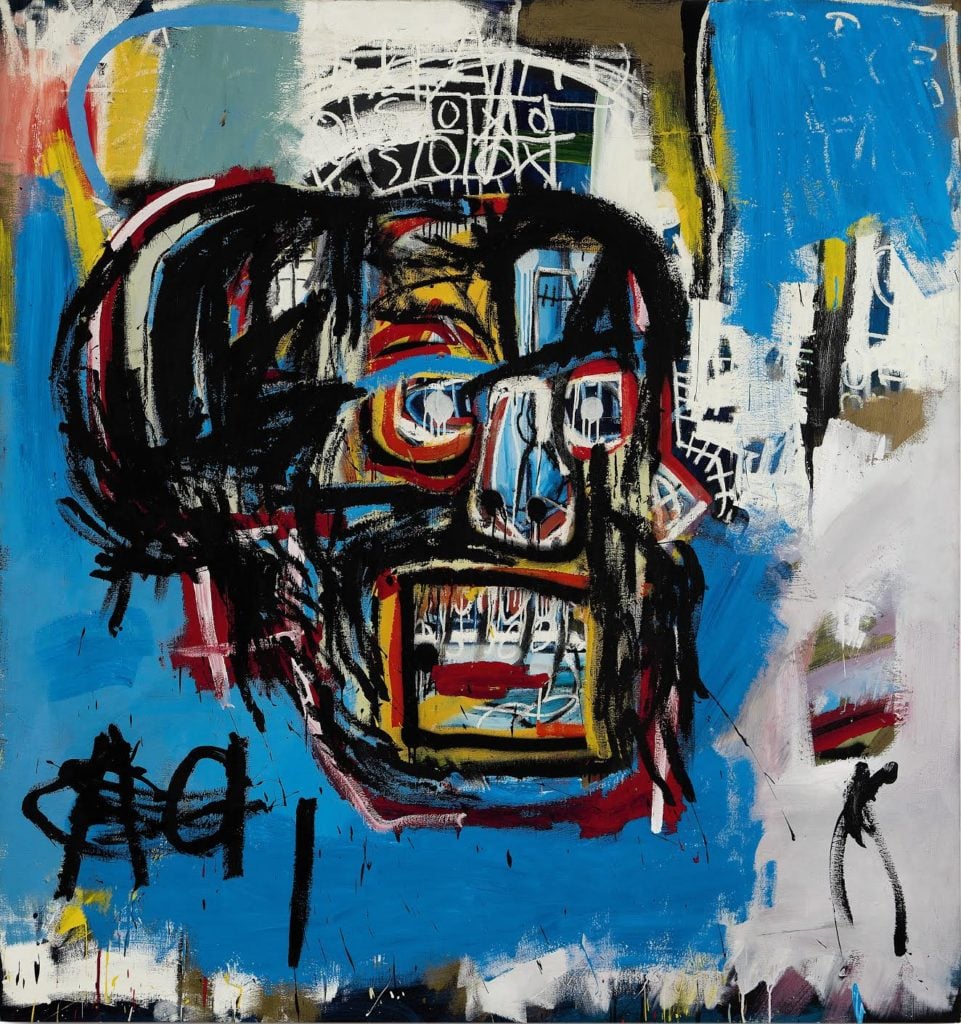
Jean Michel-Basquiat, Untitled (1982). Courtesy of Brooklyn Museum.
Now Basquiat was already scaling up into the huge proportions of New York’s neo-Expressionist ‘80s. Untitled is one of several potent images of giant skulls he made at that time that helped earn him his reputation, uniting a very ancient art symbol, the skull of countless memento mori, with his knack for creating logo-like repeatable icons that hit your brain all at once, earned as a street artist.
It is a headbutt of a painting, thunking you to attention.
As a whole, the frenzy of the surface shows the energy that graffiti was bringing into the painting world. It is covered with half-decodable letters and the sense of multiple, overlapping layers and thoughts.
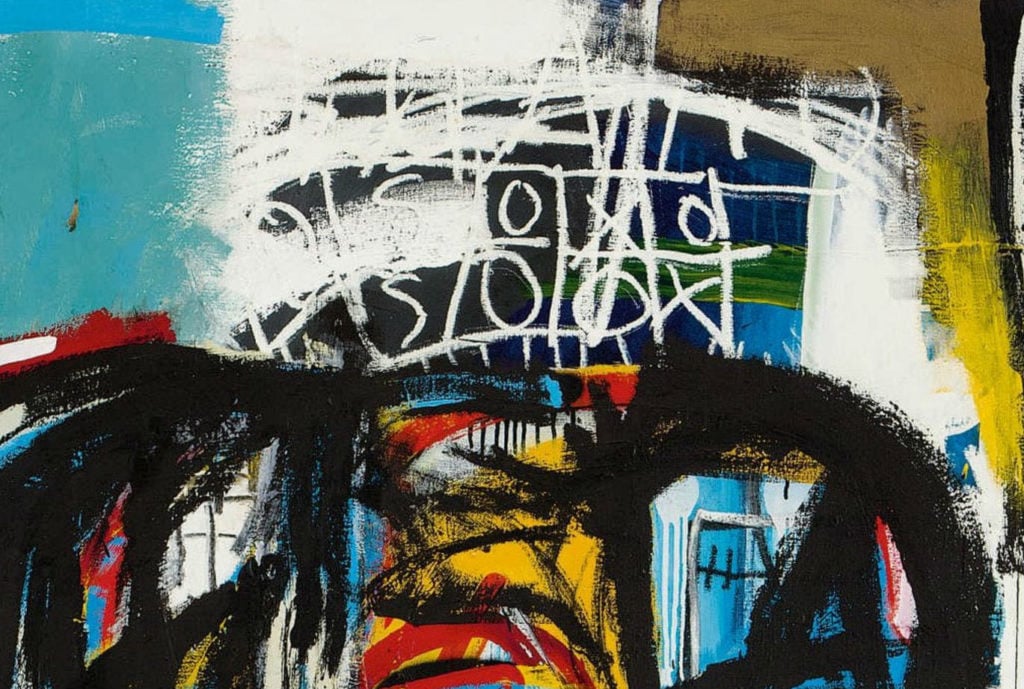
Symbols above the head: Detail of Basquiat’s Untitled (1982).
In this way, Untitled deliberately evokes the look of defaced subway walls or bathroom stalls; mark-making that is public but also unsanitized, and in guerrilla competition for your attention.
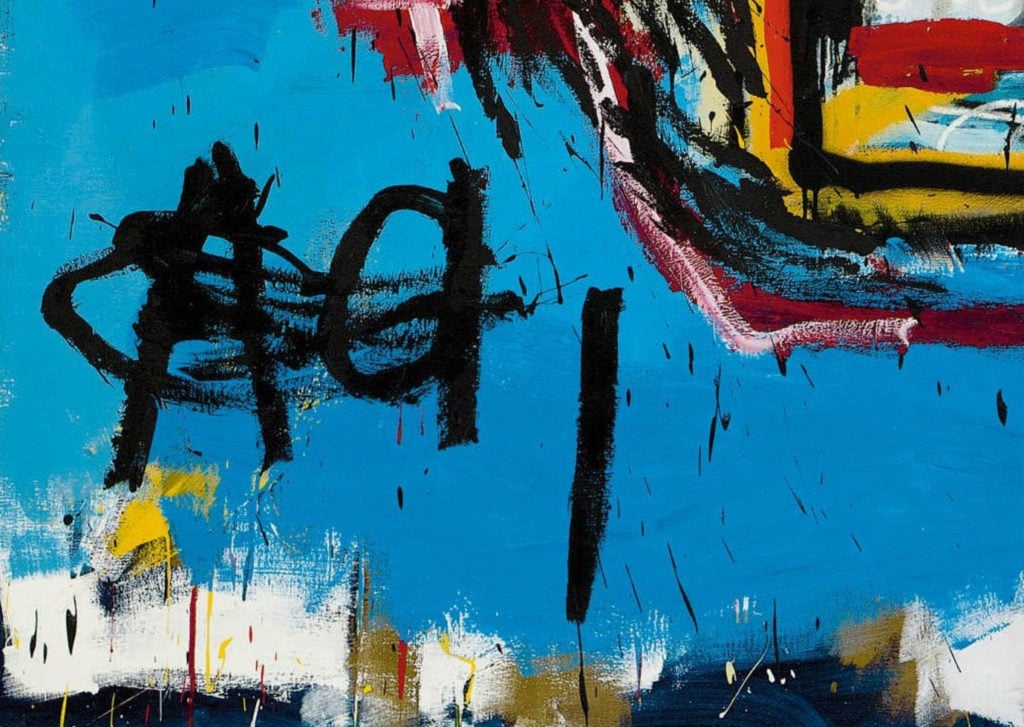
The repeated letter “A”: Detail of Basquiat’s Untitled (1982).
What do the characters scrawled on the painting mean? They are As, Xs, Os (sometimes disintegrating into a broken S or 5): symbols of elemental communication, before it is filled in with the nuance of actual embodied meaning—or after it has been stripped of it.
Basquiat’s centering figure here is a human head, boiled down to a caricatured symbol of itself. It’s squashed and flattened, the back of the skull bulging out to the side. You could say that, with its gaping mouth and popping eyes, it becomes a depiction of how painful it is to be reduced to a symbol.
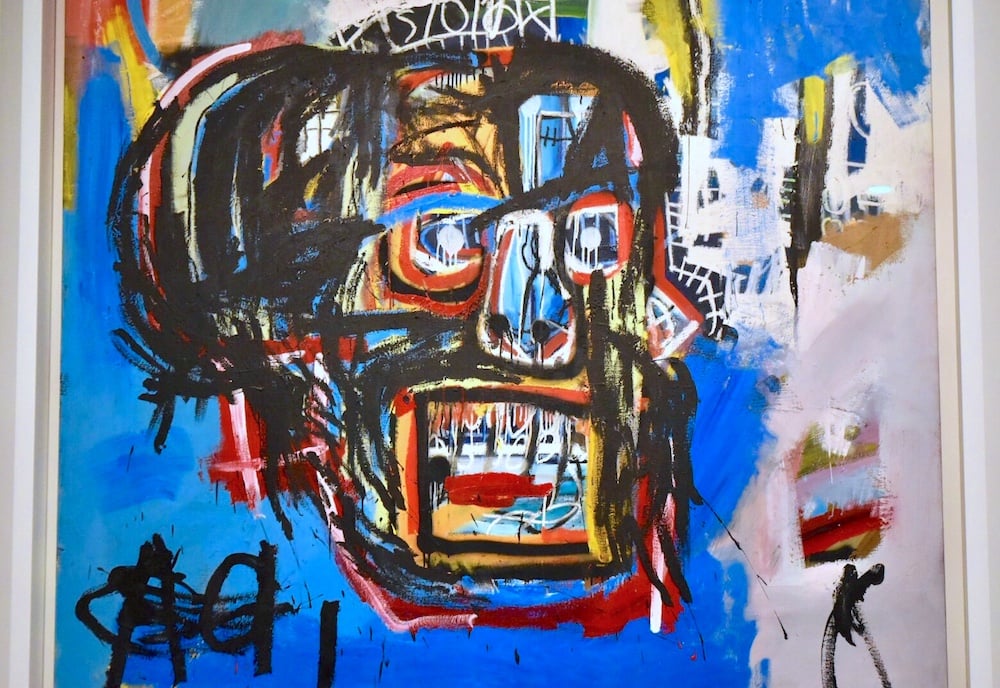
The skull: Detail of Basquiat’s Untitled (1982).
Everything about the painting projects energy, urgency, gut-punch directness. If you look a little while, though, what you see is how carefully Basquiat composes that directness, and how much thought about what it means is embedded into the canvas.
What surfaces first for me is the interplay of Basquiat’s colors. Stark black is the most aggressive presence, of course. Brushy white and blue contend to be the background color, with neither totally winning, so that you are left with a feeling of seething uneasiness.
Next up in the palette are slashes of yellow and veins of gory, emphatic red. The main figure, the skull, is basically defined by roughly varying blacks, whites, and variations on the three primary colors. So in color terms, the painting echoes the idea of a figure being stripped down to raw elementary components.
Beyond the central image, the rest of the canvas has some brown pushed towards the edges. After that, as you stare at Untitled, you’ll notice splashes of one-off colors, like the peach of the upper left, which doesn’t repeat anywhere else.
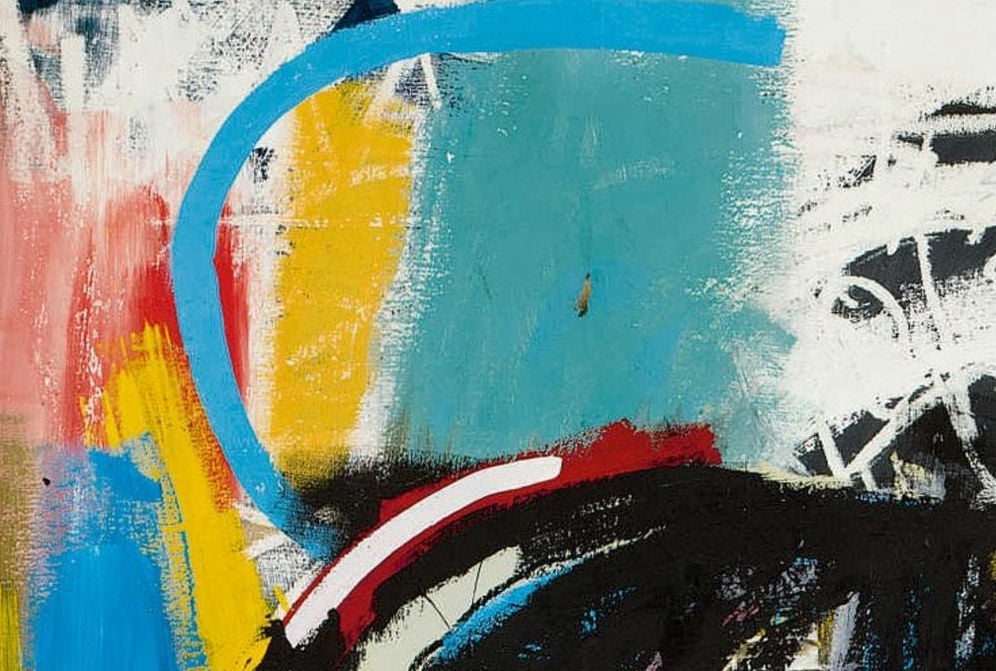
A fringe of peach, at the top left: Detail of Basquiat’s Untitled (1982).
Or to the right of the face, peeking out from a gap in the white background, there’s a flickering ray of lavender, going a different direction than most everything else here.
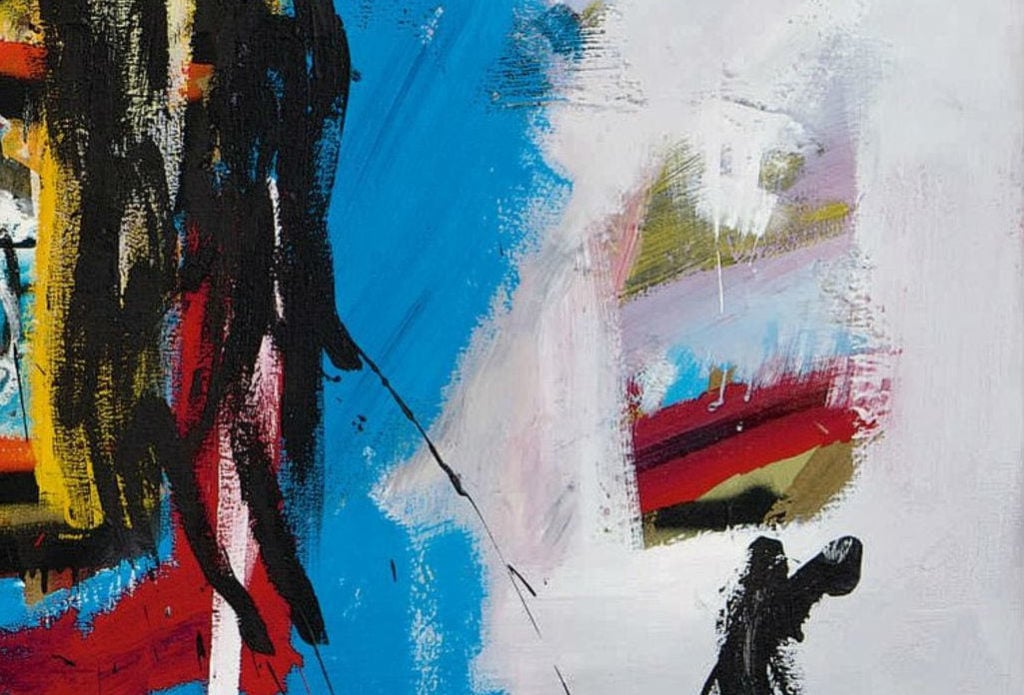
Lavender, at the middle right: Detail of Basquiat’s Untitled (1982).
What effect do these accents have, subconsciously? The more delicate, singular colors make the slashing bold black of the skull seem that much more emphatic and stark. Subtly, they add to the sense that the subject of the painting is the drama of a more nuanced world being condensed.
Which brings me back to the skull’s features.
You notice how, while the form is given a deliberately scrawled feeling, it is also careful to preserve some small sense of subjectivity, which is what gives the image emotional weight. The eyes are defined with two white dots, contrasting directly with the black dots of the nostrils. This gives the face definition, accenting the skull’s gaze so that it can seem to be really looking out and implicating you.
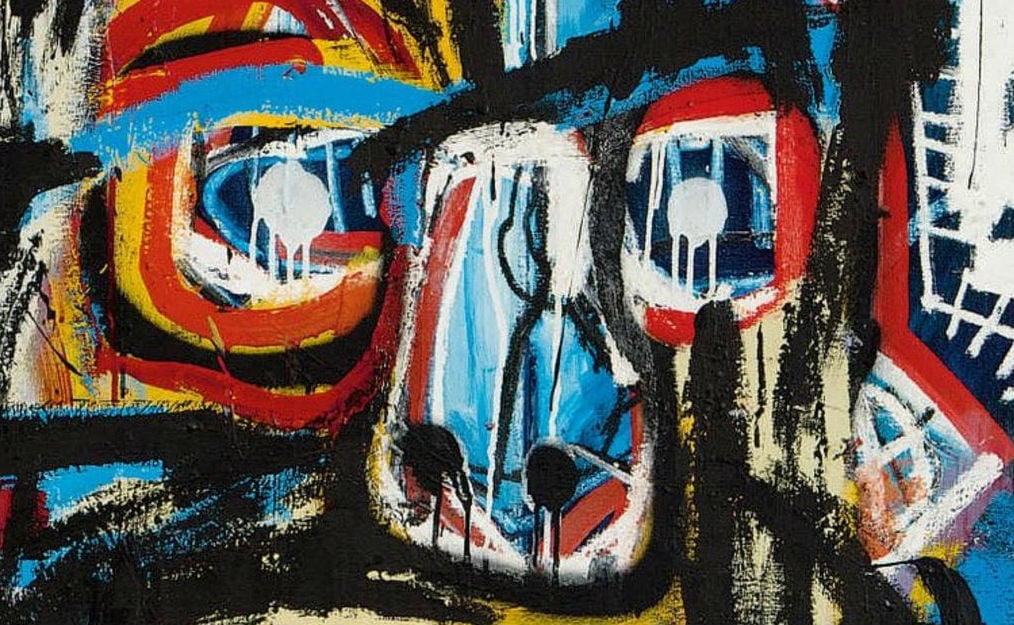
The eyes and nose: Detail of Basquiat’s Untitled (1982).
Then you might notice something else. Within the canvas’s overall ripped-from-the-brain vibe, you barely even consider how Basquiat uses drips. You register that there are drippy parts, but just think of them as residues of the painting’s energetic creation.
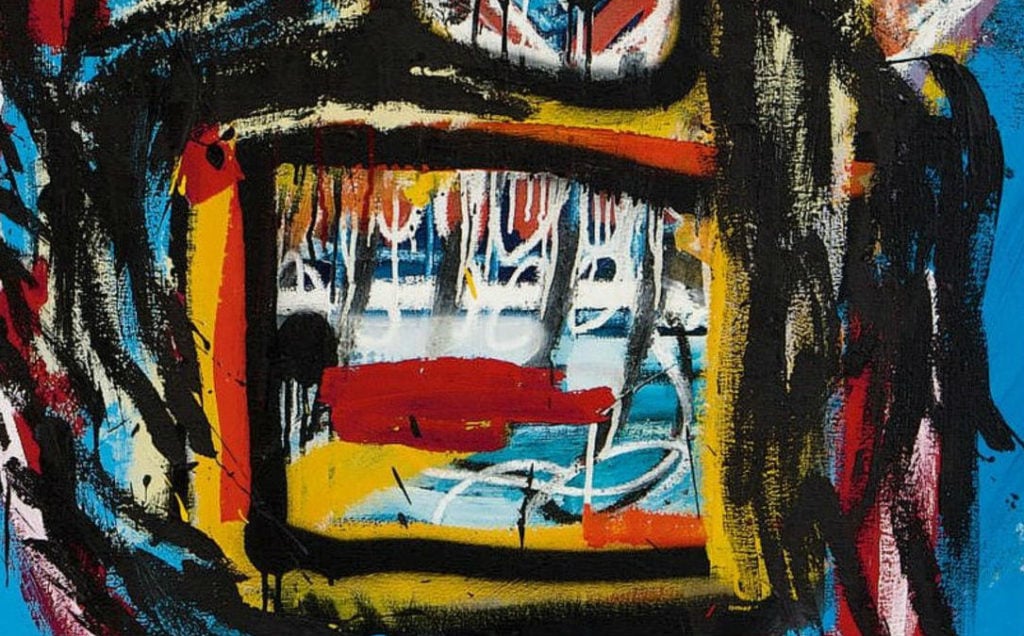
The mouth: Detail of Basquiat’s Untitled (1982).
But he only allows the thin, thread-line splashes of white to appear in a very specific location. He uses these drips, normally a symbol of speed or loss of control, in a very controlled way. They nest in the skull’s eyes and mouth. And because they specially accent these areas, they give this disembodied, screaming head a sense of depth, of literal interiority.
It’s a wonderful touch. Basquiat’s painterly intelligence is pushing back against the flattening of the skull into a pure symbol of “death,” against the forces reducing it to the status of all the other hieroglyphics scrawled around it in the canvas, maybe against being treated just as “graffiti painting.”
In a way, Untitled (1982) is built to be what it has become, a high-energy icon that can spread easily as a media image. But at the same time it also whispers that it doesn’t want to be reduced to just that; it doesn’t just want to be looked at, it wants to be seen.
“One Basquiat” is on view at the Brooklyn Museum through March 11, 2018